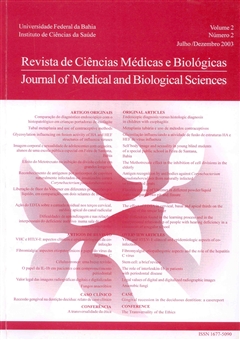Fungos anaeróbios
DOI :
https://doi.org/10.9771/cmbio.v2i2.4295Mots-clés :
Fungos anaeróbios, Hidrogenossomas, Hidrolases.Résumé
A descoberta de fungos anaeróbios obrigatórios no rume de ovelha por Orpin, em 1975, impulsionou estudos sobre tais microrganismos em laboratórios de diferentes partes do mundo. Estes estudos têm mostrado que os fungos anaeróbios não contêm mitocôndrias; em vez disso, apresentam organelas conhecidas como hidrogenossomas, que estão envolvidas na geração de energia. Estes fungos ainda produzem enzimas que são encontradas sob a forma de um complexo multiprotéico de alta massa molecular, similar ao celulossoma produzido por bactérias anaeróbias, ou individualmente. Diferentes enzimas hidrolíticas, produzidas por variadas espécies destes fungos, principalmente celulolíticas e hemicelulolíticas, têm sido isoladas e caracterizadas. Estas enzimas, em geral, têm atividades específicas similares ou maiores do que outras produzidas por fontes aeróbias correspondentes, tendo, portanto, grande potencial para aplicação industrial.Téléchargements
Les données relatives au téléchargement ne sont pas encore disponibles.
Téléchargements
Publiée
2003-01-01
Comment citer
Ximenes, E. de A. (2003). Fungos anaeróbios. Revista De Ciências Médicas E Biológicas, 2(2), 269–275. https://doi.org/10.9771/cmbio.v2i2.4295
Numéro
Rubrique
Artigos de revisão
Licence
A Revista de Ciências Médicas e Biológicas reserva-se todos os direitos autorais dos trabalhos publicados, inclusive de tradução, permitindo, entretanto, a sua posterior reprodução como transcrição, com a devida citação de fonte. O periódico tem acesso livre e gratuito.






